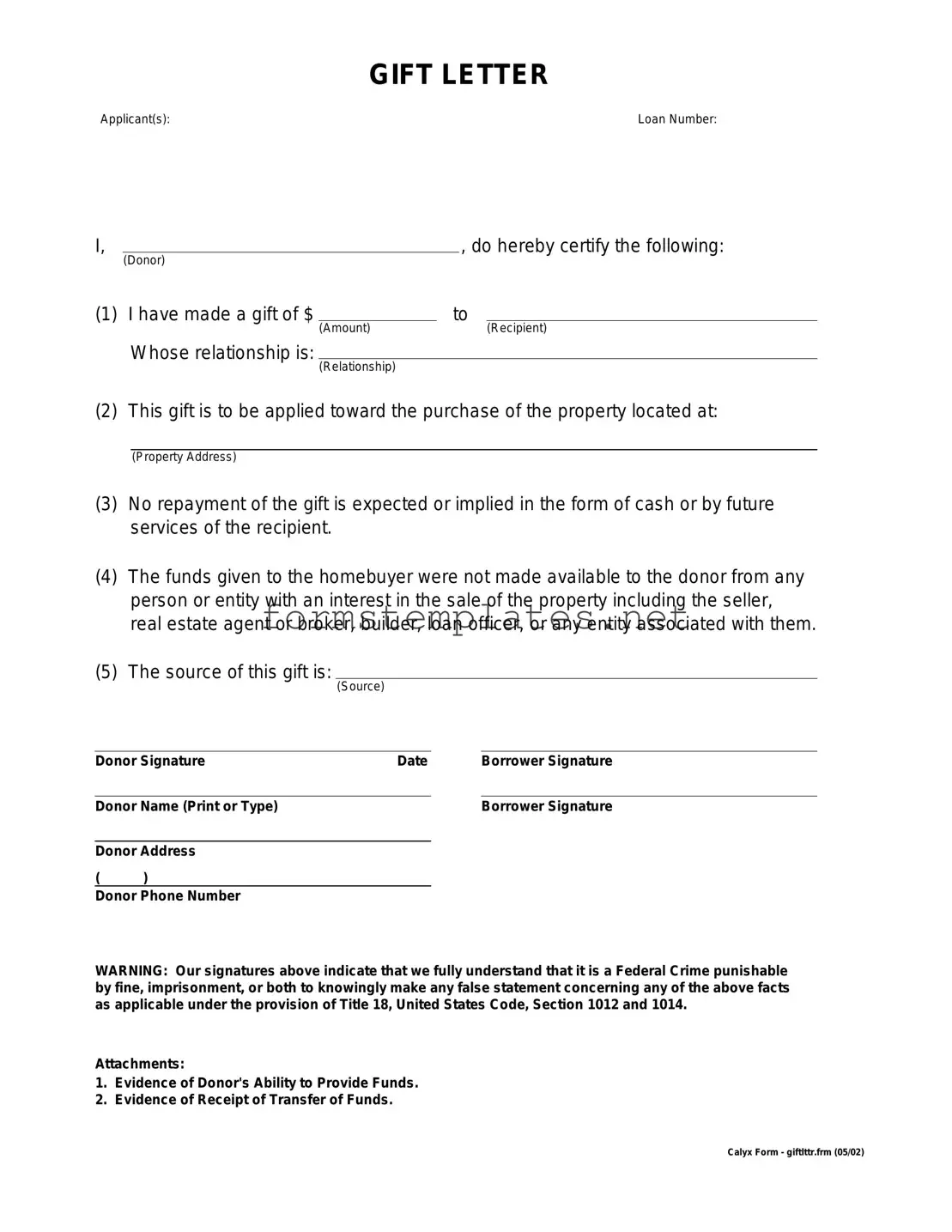
GIFT LETTER
Applicant(s): |
Loan Number: |
I, |
|
|
, do hereby certify the following: |
|
(Donor) |
|
|
|
(1) I have made a gift of $ |
|
to |
|
|
|
(Amount) |
|
|
(Recipient) |
|
Whose relationship is: |
|
|
|
|
|
|
(Relationship) |
|
|
|
(2) This gift is to be applied toward the purchase of the property located at:
(Property Address)
(3)No repayment of the gift is expected or implied in the form of cash or by future services of the recipient.
(4)The funds given to the homebuyer were not made available to the donor from any person or entity with an interest in the sale of the property including the seller, real estate agent or broker, builder, loan officer, or any entity associated with them.
(5)The source of this gift is:
(Source)
Donor Signature |
Date |
Borrower Signature |
|
|
|
|
Donor Name (Print or Type) |
|
|
Borrower Signature |
|
|
|
|
Donor Address |
|
|
|
( |
) |
|
|
|
Donor Phone Number
WARNING: Our signatures above indicate that we fully understand that it is a Federal Crime punishable by fine, imprisonment, or both to knowingly make any false statement concerning any of the above facts as applicable under the provision of Title 18, United States Code, Section 1012 and 1014.
Attachments:
1.Evidence of Donor's Ability to Provide Funds.
2.Evidence of Receipt of Transfer of Funds.
Calyx Form - giftlttr.frm (05/02)

